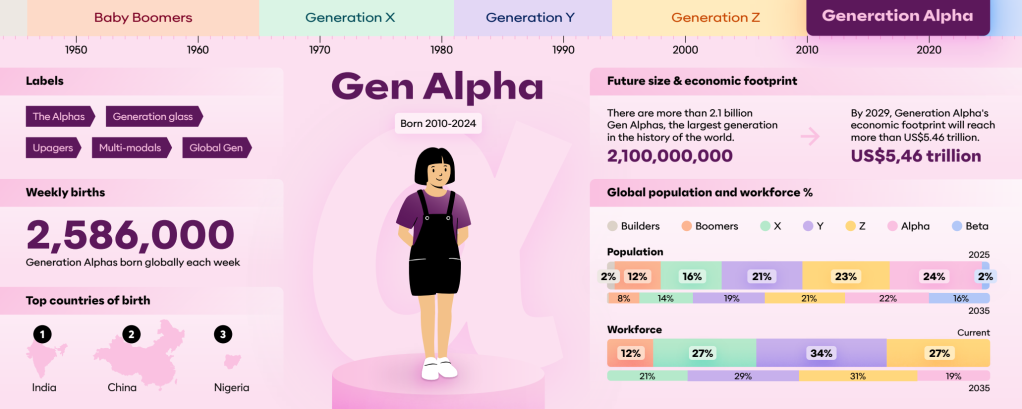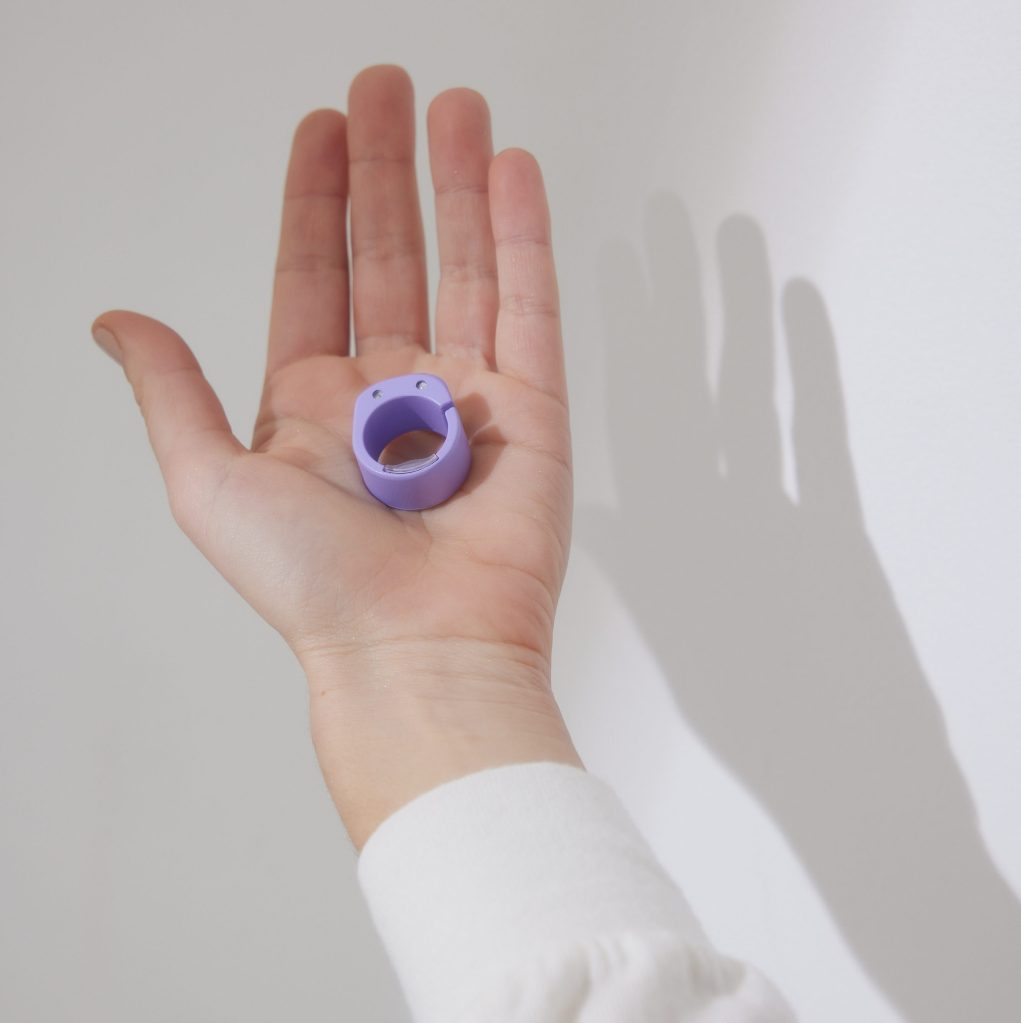Hardware founder Olivia Orchowski can see enormous potential in creating a wearable device to track the menstrual cycles of Gen Alpha women. Monetising the ring without applying a subscription fee to access the data is the next hurdle.

When the clock struck 12 on January 1 this year, a new generation was born. Newborn babies thereafter became a part of Gen Beta according to generational researcher Mark McCrindle, marking the end of an era – and closing out Gen Alpha’s 15-year reign.
Born between 2010 and 2024, the oldest ‘alphas’ are now teenagers.
“Generation Alpha is defined by technological devices like smartphones and tablets, video games, driverless trains, autonomous cars and smart speakers that speak back to you,” McCrindle states in his research. “This technology has only been developed within their generation and it is all they have ever known.”
There are more than 2 billion alphas globally, McCrindle says, and that presents a $8.3 trillion global opportunity to both understand and cater to them.
Founder and CEO of Kyri Cycles, Olivia Orchowski, has her long-term sights set on half of them. Gen Alpha’s digital upbringing makes them hungry for data and customisation, Orchowski says, and that extends to teenagers and women understanding their menstrual cycle in greater granularity than previous generations have been able to.
“This is the first generation growing up expecting personalisation, transparency, and tech that actually fits them. They’re cycle-aware younger, digitally fluent, and already questioning the pink-washed, one-size-fits-all health products on the market,” Orchowski tells Forbes Australia.

“We’re building for the billions of women globally, but our long game is Gen Alpha.”
What Kyri Cycles is building is a second-generation wearable, called Kyri Ring Generation 2, that provides ‘evidence-based guidance’ around a woman’s cycle.
“We’ve built a smart ring designed for the menstrual cycle – accurate, research-backed, and built without compromise. We focus on temperature as a reliable, science-first metric, combined with symptom tracking and predictive insights that actually reflect the hormonal shifts across a cycle,” says Orchowski.
The ring has been developed using thermoregulation, hormonal rhythms, and wearable sensor science published in academic journals, Orchowski says. Further testing will take place in the future.
“Our ring and insights engine is developed using findings from leading journals such as The Journal of Clinical Endocrinology & Metabolism and Fertility & Sterility,” says Orchowski.
The Melbourne-headquartered firm went through Techstars Sydney in 2023, resulting in a USD$120,000 pre-seed raise from the accelerator. Last year, Kyri closed a USD$1 million seed round with Techstars and Arcanys Ventures. The company recently changed its name from Femtek to Kyri and is raising a reset round to facilitate manufacturing and enable community growth.

According to the 35-year-old founder, that round will allow the company to restructure internally, secure more favourable manufacturing and logistics partnerships, and expand the nutrition and cycle-specific insights that differentiate Kyri from existing wearables.
The smart ring market
Smart rings are a growing sector. The value of the market was USD$417 million last year, and it is expected to reach USD$2.53 billion by 2032. One of the category leaders is Oura, which Orchowski says is not tailored to women’s health.
Globally, the value of the wearables market is anticipated to grow to USD$1.7 trillion within seven years. It reached USD$209 billion this year, according to Fortune Business Insights data.
Orchowski says most smart rings like Oura and Ultrahuman focus on general wellness while overlooking the specific needs of women. Oura requires an additional subscription fee for women to access their own cycle data, according to the company.
That is a point of differentiation for the $353 Kyri ring, which does not require a subscription fee. Orchowski says she has resisted insistence by potential investors to implement a monthly fee, because she believes a woman’s menstrual cycle data should be freely available to her.
“Our biggest mission was increasing cycle literacy and lessening the healthcare costs women incur because of their sex,” Orchowski wrote on LinkedIn recently.
Asked about her experience being a founder in the women’s health tech sector, Orchowski says it is ‘both wildly frustrating and deeply energising.’
“There’s constant friction between what’s clinically needed, what’s technically possible, and what gets investor attention,” says Orchowski. “But the mission matters too much to back down. The best part? Hearing from women who finally feel seen in their data.”
Providing a potential solution for Gen Alpha – as well as Gen Beta, X and Millennial women – to better understand their cycle is worth the challenges and hurdles, Orchowski says.
“Kyri is tackling the huge gap in women’s health data; particularly around the menstrual cycle,” says Orchowski. “We’re solving for that lack of specificity, personalisation, and scientific rigour in how female physiology is understood, tracked, and supported.”
Look back on the week that was with hand-picked articles from Australia and around the world. Sign up to the Forbes Australia newsletter here or become a member here.


